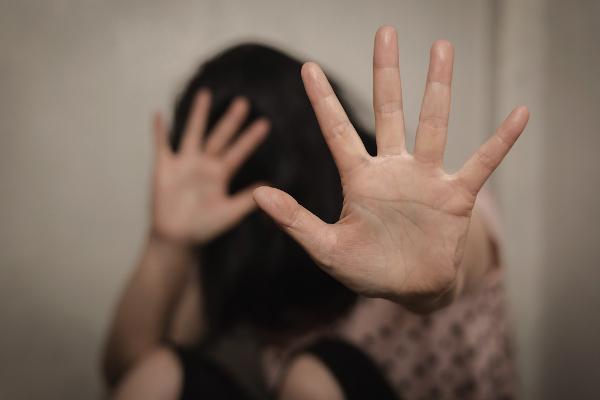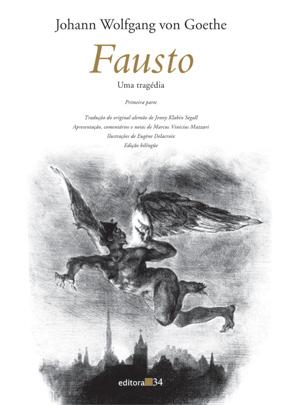A violence is defined by the World Health Organization (WHO) as any intentional self-inflicted act or against another person or group that could result in injury, psychological harm, disability, deprivation and death. It is also understood as a structural problem aggravated by the characteristic socioeconomic inequalities of the system in which we are inserted, in addition to the lack or ineffectiveness of public policies aimed at its prevention.
Read too: What is a crime against humanity?
summary about violence
Violence is a structural problem aggravated by the deepening of socioeconomic inequalities, social exclusion and the absence or neglect of public power.
It is classified, by the World Health Organization (WHO), in: self-inflicted violence (self-mutilation and suicide), violence interpersonal violence (domestic violence and community violence) and collective violence (political violence, social violence, violence economical).
Violence prevention involves understanding the problem on a local scale and subsequent development and implementation of policies public policies aimed at social inclusion, the reduction of socioeconomic inequalities and improvements in the quality of life of population.
Brazil is on the list of the most violent countries in the world.
The problem of violence in Brazil has its origin in the history of the country's social formation, which happened in an unequal and exclusive way.
The main typology used for studies on violence is the prepared by the World Health Organization (WHO), which consists of differentiating this problem based on how it is perpetuated and also by analyzing the relationship established between the perpetrator and the victim. Therefore, the WHO classifies violence into:
Self-inflicted violence: when an individual commits the act of violence against himself, without the interference of third parties. Within this category, there are two forms of violence, self-mutilation (or self-abuse) and suicide.
-
Interpersonal violence: when acts of violence are committed between individuals, that is, there is the existence of one (or more) perpetrator and one (or more) victim. Interpersonal violence can be subdivided into two categories:
Family and conjugal violence, or domestic violence, which takes place within the same family nucleus and is committed between relatives, spouses and/or intimate partners. Violence against women, also included in the scope of gender violence, violence against the elderly and violence against children are some examples.
Community violence, which, unlike domestic violence, occurs between individuals who do not belong to the same family or have a close relationship. The WHO lists crimes against property, abuse against strangers and violence in the workplace as examples.
-
Collective violence: it has as perpetuators groups of individuals aiming to attack individuals or groups of individuals in specific, with a determined cause. This category is subdivided into:
political violence;
social violence;
economic violence.
Possible measures to prevent violence
Violence is a problem with a complex and diffuse origin that varies from country to country, but which maintains aspects in common, such as their perpetuation as socioeconomic inequalities deepen.
In this sense, the United Nations (UN) understands that the prevention of the various forms of violence and reducing the number of deaths caused by violent actions are fundamental to guarantee of sustainable development and to achieve justice and peace on a global scale.
The ways in which violent behavior can be prevented are the subject of numerous discussions, sincehe mustm approach social, economic and public health and safety issuess. One of the first steps is the violence mapping and the carrying out diagnoses about violent actions to think about targeted actions.
From then on, it is up to elaboration of public policies that act in the reduction of socioeconomic inequalities, in the social inclusion of children and young people, in the expanding access to education, creating professional training courses and opportunities for dignified work and also in improvements in the quality of life in cities, such as the expansion of basic sanitation networks and access to urban infrastructure.
violence in Brazil
Violence in Brazil is a problem historic with roots nthe unequal process of formation of Brazilian society which was decisive for the existence and maintenance of an exclusionary socioeconomic structure.
Thinking about a more recent timeline, the rapid growth of cities in Brazil, from the second half of the twentieth century, led to an increase in cases of urban violence.
In addition to the structural issues that help us understand the current scenario of violence in the country, it is important to highlight that the failure to guarantee the basic rights of the population due to State negligence, since these rights are guaranteed by the Federal Constitution of 1988, it is a flawed justice system also contribute to the worsening of violence.
It is important to point out that one of the indicators for measuring the degree of violence is the number of intentional violent deaths, based on which Brazil it's a dyou 10 most violent countries in the world.
According to the Brazilian Public Security Forum, the country recorded 22.3 intentional violent deaths per 100,000 inhabitants in 2021. Although this number was lower than the previous year and represents the downward trend that had taken hold after a peak in 2017, when the rate was 30.9 deaths per 100,000 inhabitants, the FBSP researchers warn that this reduction occurred unevenly in the Brazilian states, and in some cases the rate increased rather than decreased.
An alarming fact about violence in Brazil is the fact that you homicides that took place in the country represent one Thehigh share of the total on an international scale, being 20.5%, even though the Brazilian population corresponds to less than 3% of the world population.
The Atlas of Violence, produced by the Institute of Applied Economic Research (Ipea) together with the FBSP, is another important document that presents data and the profile of violence in the territory Brazilian.
The most recent edition shows that, in Brazil, young people and blacks are the main victims of homicide. The chance of black people being killed by violence in the country is 2.6 times greater than that of non-black people, reflecting the racist structure in which society was constituted. Violence against the LGBTQIA+ population and violence against women, which we will discuss below.
It is also worth mentioning the violence to which the indigenous populations from Brazil, having increased by 21.6% between 2009 and 2019. According to the Atlas, the mortality rate is higher in Indigenous Lands than in non-demarcated areas, which leads us to another problem directly linked to this, which is violence in the countryside.
This type of violence is caused by the intensification of conflicts over land and the expansion of areas of economic activity such as the agribusiness, The mining, mining and extractivism vegetable. To learn more about this subject, visit: violence in Brazil.
violence against women
A violence against mewoman é a type of gender violence what happens when you commit physical, psychological, sexual or other acts, such as moral and against a person based on their gender, causing suffering (physical and psychological), pain and even even death.
Although these violent actions take place mainly at home, perpetrated by family members, spouses and partners, violence against women takes place in different ways and in different environments., so that women are also victims of harassment and aggression in the streets, at work, on public transport or in doctors' offices, which demonstrates the dimension and seriousness of this problem.

In 2021, 1319 women were victims of femicide in Brazil, according to the FBSP survey. In 2022, 699 cases were registered in the first half, considered a record for a six-month period, and an increase of 3.2% compared to the same period in 2021.|1|
The Atlas of Violence also points to a 6.1% growth in the female homicide rate between 2009 and 2019. The largest share of victims (67%) corresponds to black women. In all, 50,056 women were killed in Brazil in this 10-year period.
Cases of domestic violence committed against women in Brazil have also increased alarmingly.. Information from the National Human Rights Ombudsman, published by the Ministry of Human Rights and Citizenship in 2022, reveal that, in the first half of that same year, 31,398 complaints were registered at the Women's Assistance Center (Call 180).
Check out our podcast: Violence against women in Brazil and in the world
Most Violent Countries in the World
Below is a list of the 10 most violent countries in the world based on data from the United Nations Office on Drugs and Crime (UNODC).|2|
Country |
homicide rate* |
Jamaica |
44,95 |
Honduras |
36,33 |
South Africa |
33,46 |
Mexico |
28,37 |
saint lucia |
28,32 |
Belize |
25,65 |
Colombia |
22,64 |
Brazil |
22,45 |
dominica |
20,84 |
Guyana |
19,86 |
*The homicide rate is equal to the number of registered homicides divided by 100,000 inhabitants.
Grades
|1| ACAYABA, Cynthia; ARCOVERDE, Leo. Feminicides break a record in the 1st half of 2022 in Brazil when transfers to the fight against violence against women were the lowest. G1 SP and GloboNews, 07 Dec. 2022. Available here.
|2| Information taken from the 2022 Brazilian Public Security Yearbook published by the Brazilian Public Security Forum (FBSP).
By Paloma Guitarrara
Geography Teacher
Source: Brazil School - https://brasilescola.uol.com.br/o-que-e/o-que-e-sociologia/o-que-e-violencia.htm



